
Palazzo dell'arte della Lana or simply Palazzo Lana / Lana Palace is a historic medieval building, a palace in Florence, which is one of the best preserved ancient towers of the city.
The name translates as "the palace of wool art".
A powerful medieval building with a characteristic exterior is located in the oldest part of the historic center of Florence and stands out vividly among the surrounding ensemble of buildings.
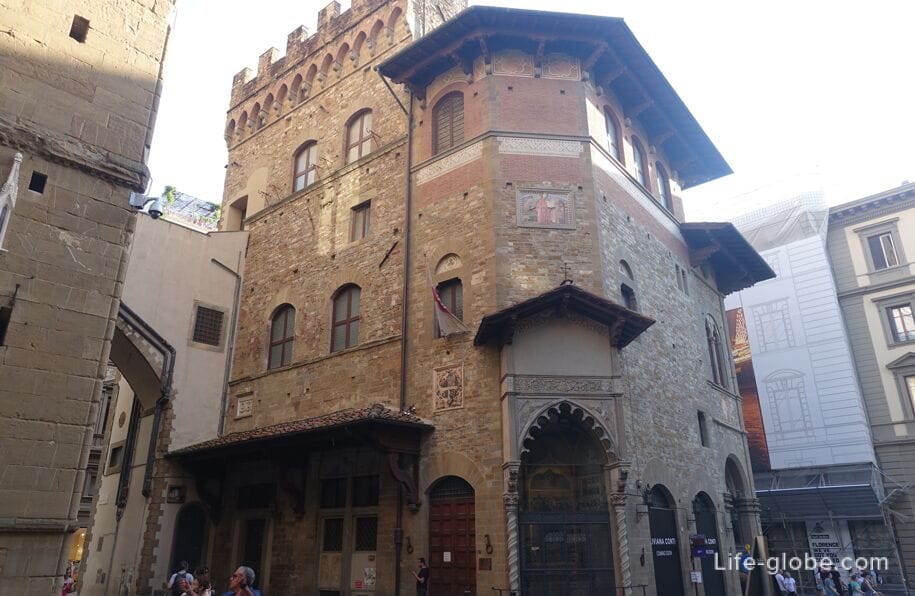
The palace is also known as the Compiobbesi Tower (Torre dei Compiobbesi), as it was built in the 13th century for the Compiobbesi family.
Since 1308 it has been the residence of one of the richest guilds of the city - the guild of wool producers "Arte della Lana". Hence the name of the building.
Since the sixteenth century, by decree of Cosimo I de' Medici, the second floor of the building was allocated for the notary archive.
In 1569, the Italian architect Bernardo Buontalenti built a beautiful entrance portal.
In 1905 Enrico Lusini completely restored the building, after which it has its current medieval appearance. This period also includes the restoration of frescoes with coats of arms on the stairwell and in other rooms of the upper floors, as well as a polychrome plaque depicting Dante, depicting the "Divine Comedy", placed outside the building and dating back to the famous panel of Domenico di Michelino in the Cathedral of Santa Maria del Fiore in Florence.
Since the same year, the building belongs to the Italian Dante Society, which has its offices and library in the tower building. There are also shops here.
Today, this Gothic crenellated stepped building is one of the most famous of its kind in Florence. It has a number of stone exterior cladding.
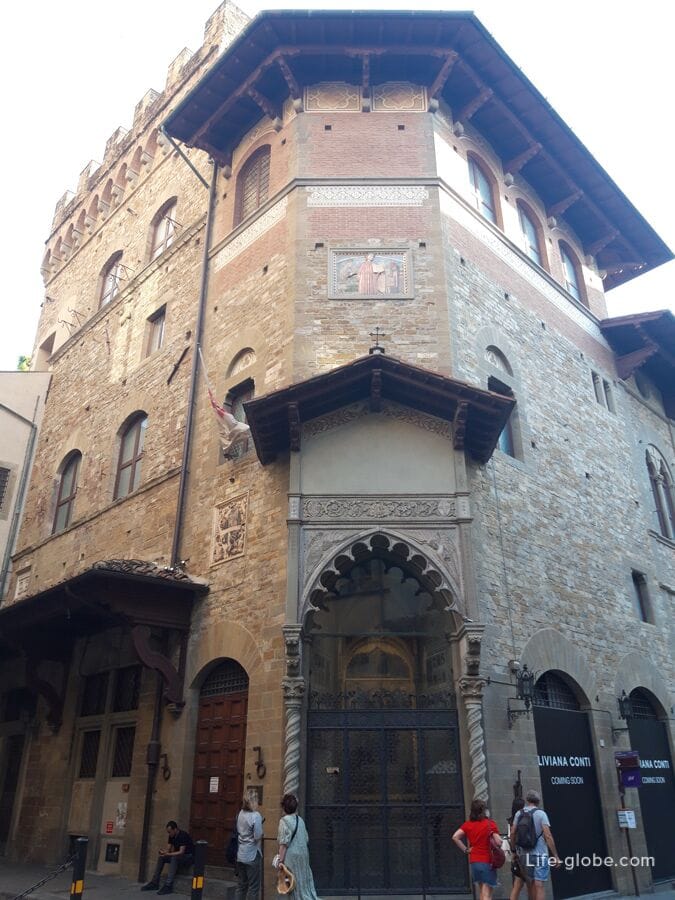
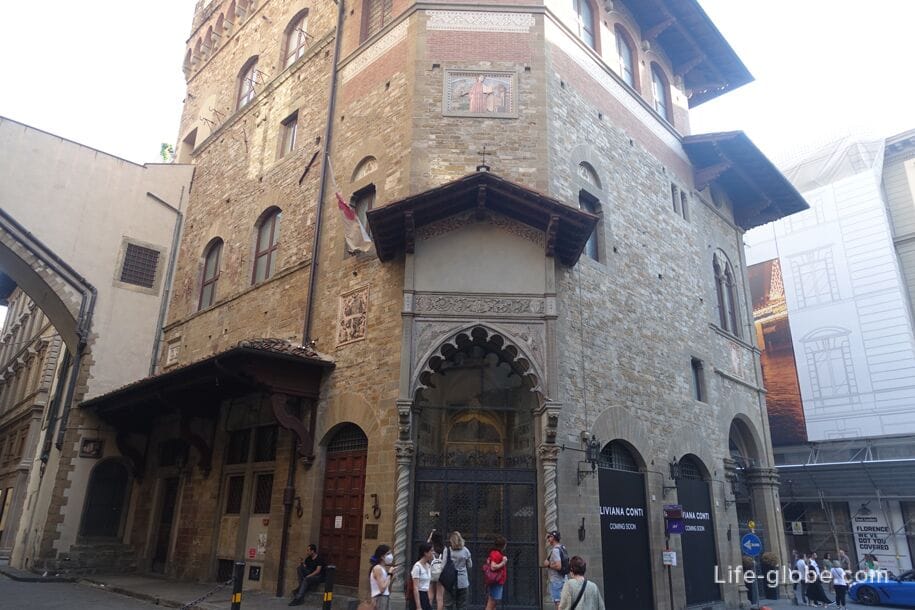
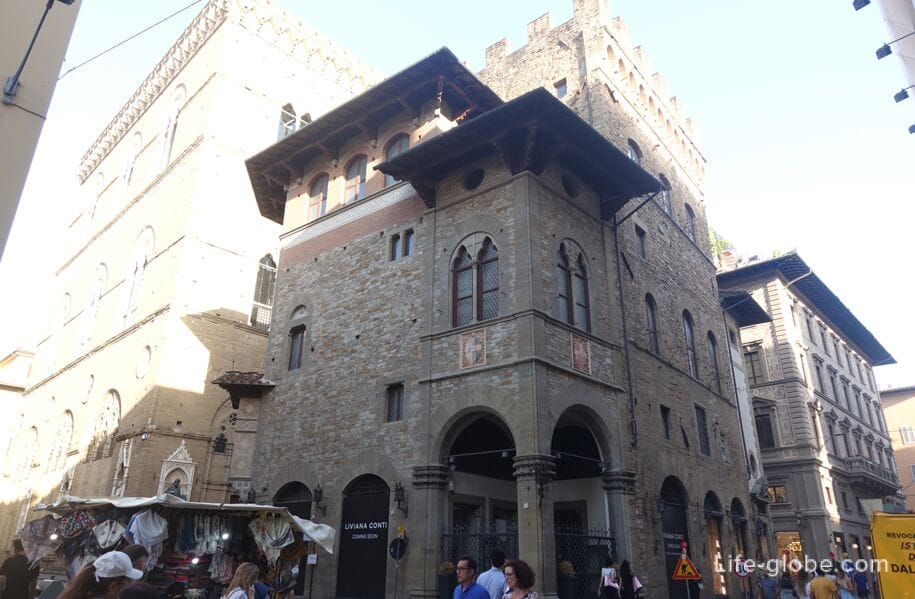
A more modern loggia with large arched windows is attached to the south side of the building.
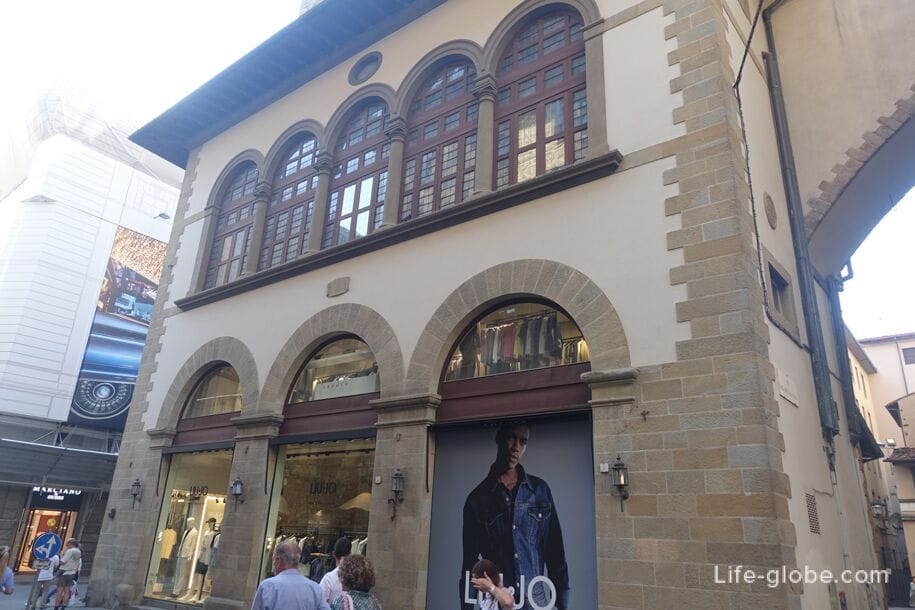
Inside the building, the Neo-Gothic staircase and frescoes of the fourteenth century are noteworthy, especially in the Audience Hall: virtues and evangelists are depicted in the vault, between the windows there is a Madonna enthroned between angels, on the left wall there are San Martino, San Pancrazio, San Pietro and San Felice, works probably, but not exactly, by Lippo di Benivieni or followers of Maestro del Crocifisso Corsi and dating from 1310-1320. On the right wall is an Allegory of the correct administration of Justice circa 1340 in the style of Ambrogio Lorenzetti.
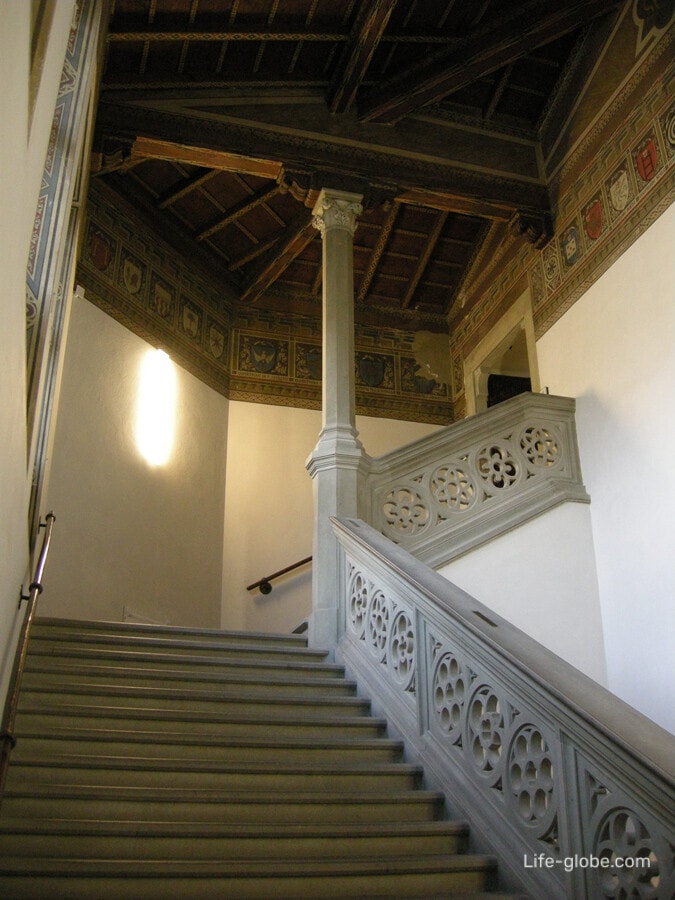

In the room that the shop now occupies, on Kalimala Street 16-18 Krasnaya, there are frescoes depicting the stages of wool processing, coats of arms and other objects in quadrangles, also attributed to Lippo di Benivieni or the artist from the circle of the Master of the Madonna delle Grazie, dating back to the first or second decade of the fourteenth century.
In the shop at number 20 red there is a tabernacle with a fresco of the Madonna and Child between Saints Stephen and Philip, attributed to the Master Bargello (1365-1370 years).
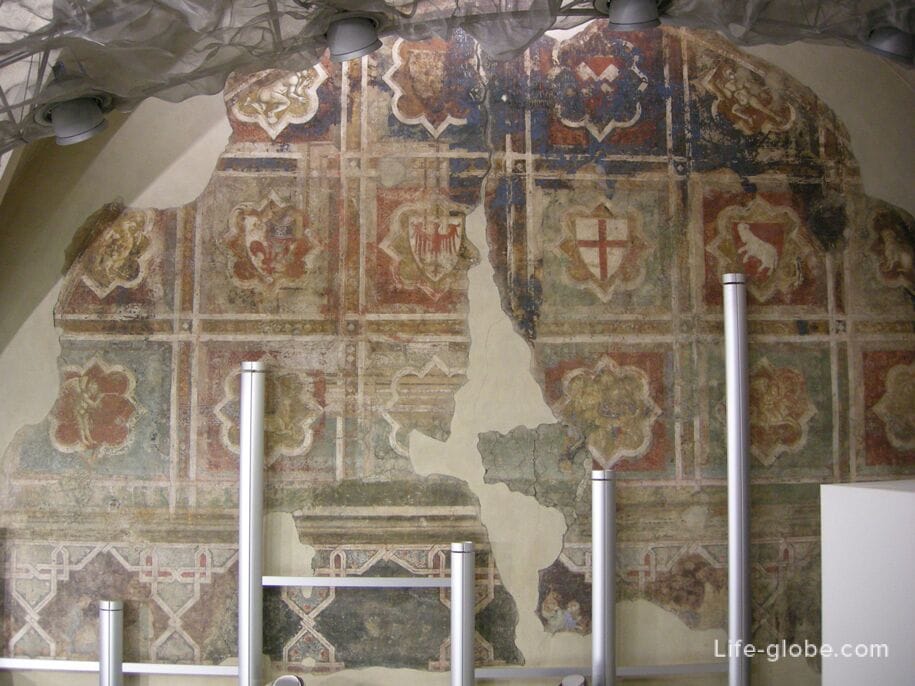


On the ground floor there is a room in neo-medieval style, with painted frescoes and decorated with a number of coats of arms associated with the city. This part of the building is the residence of the Italian Dante Society, which has a library here. There is also a lunette with a Madonna on a throne among the angels.
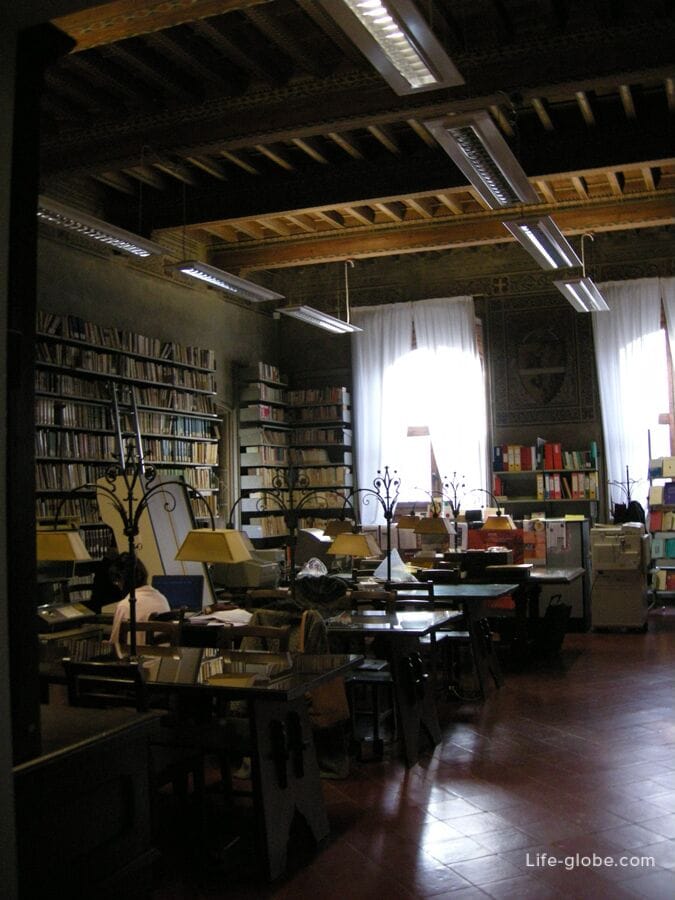
A covered arched corridor connects the Palazzo dell'arte della Lana with the magnificent neighboring Gothic building, which is occupied by the Orsanmichele Church-Museum.
The corridor was created in 1569 by Bernardo Buontalenti.
These two buildings together form one of the most architecturally picturesque views in Florence.
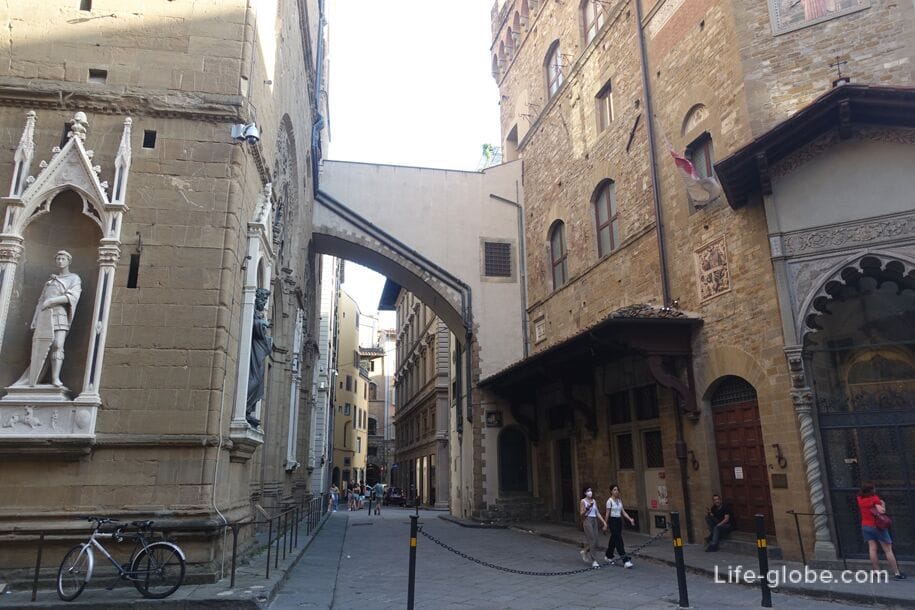
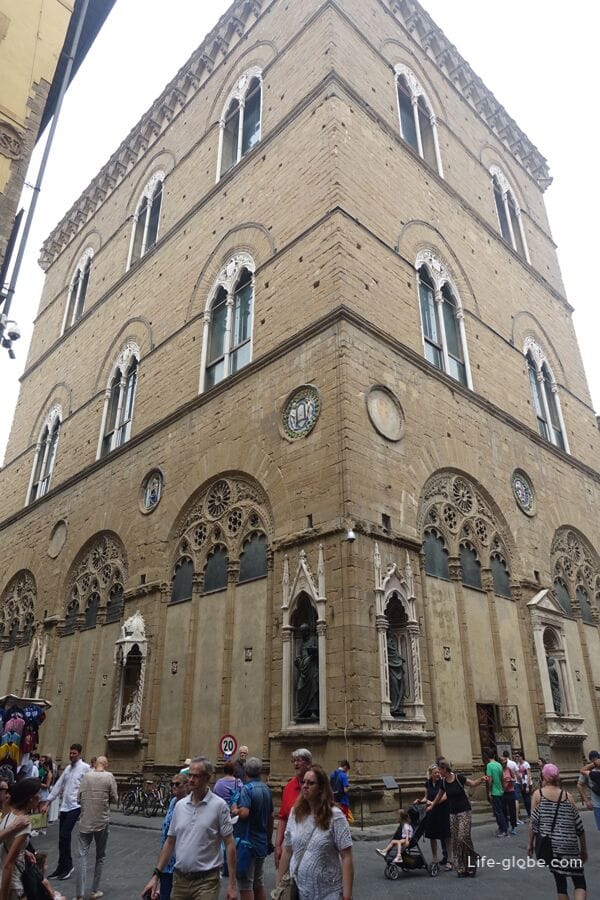
Address of Palazzo Lana: Via dell'arte della Lana, 1, 50123 Firenze FI, Italy.
Coordinates of Palazzo Lana: 43°46'14.7"N 11°15'16.8"E (43.770739, 11.254675).
All accommodation facilities in Florence (hotels, apartments, guest houses, etc.), including in the historical center of the city and more remotely from it, can be viewed and booked here